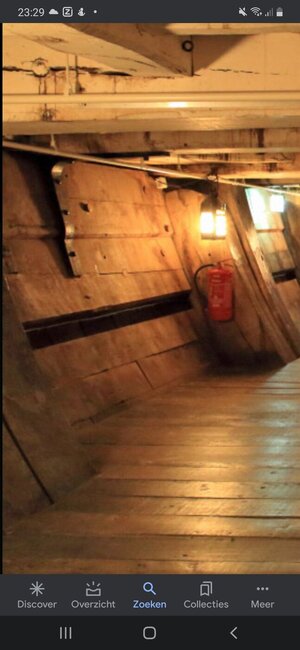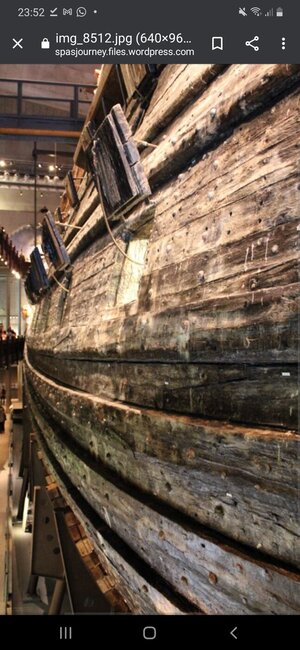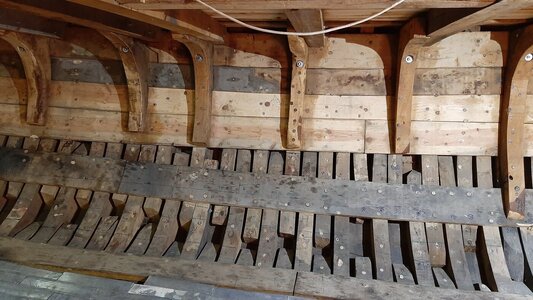As I was quite happy with the seringe needle treenails I have made a more permanent tool.
The needle I have silver soldered in the spare tip of my gas fueled soldering pen.
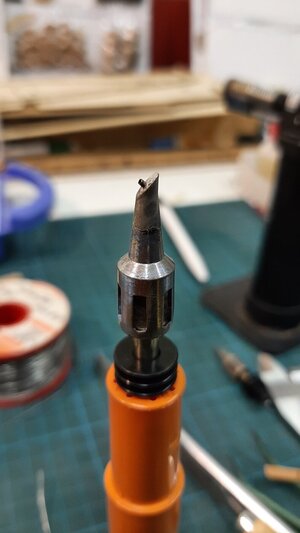
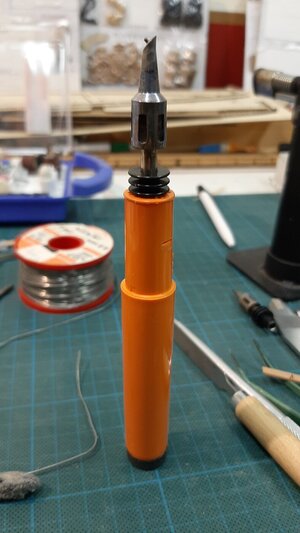
Ofcourse you can do this with an electric soldering iron, but the gas fueled sedering pen is small, has no wire so very easy to handle. This helps to create the treenails in spots with high accuracy.
This is just a brief test of the new tool in 5mm wide cherry wood.
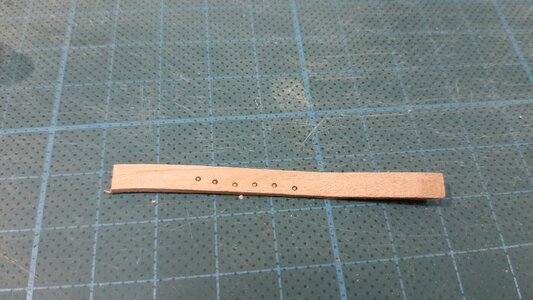
This is a 0,6 mm treenail, or 1" at 1:48 scale.
Think I will also prepare larger ones for other scales.
The needle I have silver soldered in the spare tip of my gas fueled soldering pen.


Ofcourse you can do this with an electric soldering iron, but the gas fueled sedering pen is small, has no wire so very easy to handle. This helps to create the treenails in spots with high accuracy.
This is just a brief test of the new tool in 5mm wide cherry wood.

This is a 0,6 mm treenail, or 1" at 1:48 scale.
Think I will also prepare larger ones for other scales.






